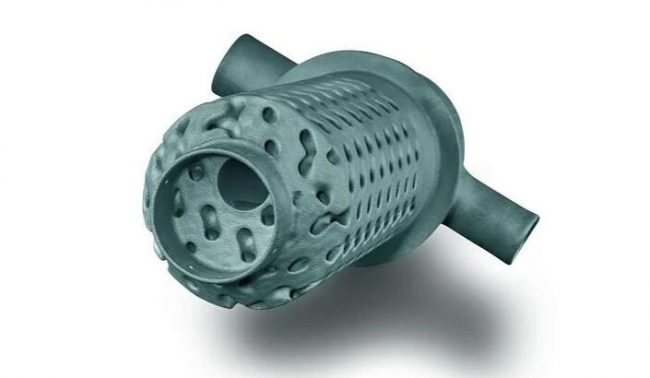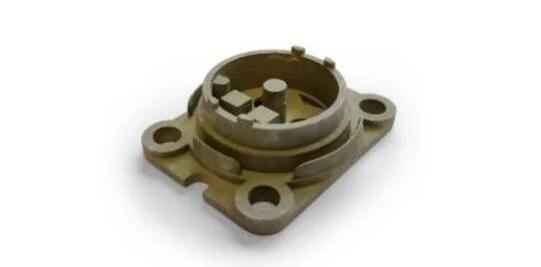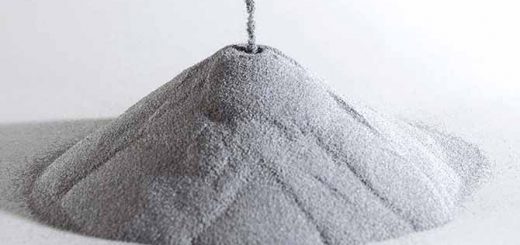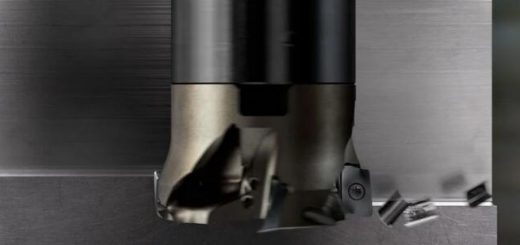High-Performance Materials From The 3D Printer
Introduced in 1981, 3D printing has long served to transform plastics into revolutionary new shapes. The direct and fast approach of designing a component on the computer and producing it without using a mold opened up (almost) unlimited possibilities in terms of design. Schunk has not only implemented this technology of the future with common materials, but also enables additive manufacturing using high-performance materials such as ceramics, special powder metal, fiber-reinforced composites and 3D printing of multi-component materials. In Schunk’s Tech Talk with their experts Dr. Lars Schnetter, Tobias Heusel and Florian Reichert you will find out, how customers benefit from this technology, from the product idea to series and mass production, and what the state of development is.
![]() 3D printing of technical ceramics
3D printing of technical ceramics
For many years, 3D printing of technical ceramics was just a dream in the engineering world. It was hard to imagine that the process would ever work with such a hard material. Especially given the fact that ceramics shrink during sintering. For a long time, the maximum size of manufacturable parts was limited to a few cubic centimeters.
Q: What is special about 3D printing technology in the Technical Ceramics division?
Lars Schnetter: We started 3D printing of silicon infiltrated reaction bonded silicon carbide (RBSiC) in 2014 and invested in a powder bed printer at that time, which we have advanced over time. Since then, we have specialized in 3D printing of this material, because: RBSiC is predestined for 3D printing. Mainly due to the fact that it does not shrink during sintering. This allows us to produce large formats and parts with high density. The material created in our 3D printing process is called IntrinSiC©.
Basically, all conventional forming technologies are available to us. However, 3D printing green parts is a great way for us to realize a level of design freedom that we didn’t have before. For firing the parts, we still use our conventional high-temperature processes. This keeps costs under control.
Q: Why doesn’t RBSiC shrink during sintering?
Lars Schnetter: The reason for the low shrinkage of RBSiC is that part of the silicon reacts with carbon to form silicon carbide and, together with the primary silicon carbide, forms a three-dimensional ceramic matrix. The rest of the silicon, on the other hand, fills all remaining voids.
Meanwhile, 3D printing has also found its way into the construction industry. So even very large parts can be made using additive manufacturing.
What are the largest parts you produce using the 3D printing process?
Lars Schnetter: Admittedly, we can’t build entire houses made out of IntrinSiC©. That’s not our goal either. But due to the size of our printer, we are able to produce parts with dimensions of 1.8 m in length, 1 m in width and 0.7 m in height. We can process more than two tons of silicon carbide per day. This makes us not only the first company to develop a qualified and reproducible 3D printing process for products of this size made of RBSiC, but also the first to bring this technology to series production scale.
Q: What about quality?
Lars Schnetter: At the beginning, we had to realize that printing ceramics is not an easy task. The material properties such as hardness, strength, density and elastic modulus could not initially keep up with the level of our conventional materials. We also faced cracks from time to time.
But now these problems have been overcome, and our 3D printed material is at the same level as our conventional RBSiC. We can now offer our customers the best process for any part they want, and even combine conventional processes with our 3D printing using our garnishing techniques.
Q: What makes 3D printing so interesting as an additional forming method?
Lars Schnetter: Silicon carbide is almost as hard as diamond. To machine it is therefore very expensive and time-consuming. With our 3D printing process, on the other hand, we can produce near-net-shape parts and minimize hard machining. In addition, the technology offers almost unlimited freedom in design, allowing us to realize complex geometries that would be inconceivable using conventional methods.
Now, our additive manufacturing process is highly productive. We can process a job box equivalent to two tons of material in one day. For complex parts, this is already a very productive method, superior to the alternative of isopressing followed by green machining of these parts.
Q: For which of your products does 3D printing offer the most benefits?
Lars Schnetter: In the meantime, we have developed several products with our customers and brought them to series scale.
For example, an optimized radiant tube for indirect heating. With conventional molding processes, the feasible internal structures are limited. With the help of 3D printing, on the other hand, we can produce complex structures with an enlarged surface area, thus increasing the efficiency of the entire system.
Another example is a completely newly developed IntrinSiC© recuperative burner, or IRecu, for indirect heating of heat treatment furnaces. The product exploits all the flexibility of 3D printing. With 3D-printed gyroid structures, it maximizes energy efficiency to unprecedented levels.
 IntrinSiC© recuperative burner, or IRecu, for indirect heating of heat treatment furnaces.
IntrinSiC© recuperative burner, or IRecu, for indirect heating of heat treatment furnaces.
In addition, we manufacture machine components that need to be rigid and lightweight. Compared to conventionally molded and post-machined parts, our 3D printing process is much more economical here. We have developed parts that save 30 percent in weight compared to the original structure without compromising stiffness.
![]() 3D printing of sintered metal
3D printing of sintered metal
Additive manufacturing of metals has always been a challenge. Because of their high melting point, special processes have had to be developed. These include direct laser melting, in which a laser or other small heat source melts the powder onto the surface and fuses it instantly. Some machine manufacturers and service providers have been successful with this process. Schunk, however, is taking a different approach …
Q: how is the Sinter Metals division advancing 3D printing?
Tobias Heusel: Like the Technical Ceramics team, we also rely on binder jetting technology in Sinter Metals. In this process, the metal powder is introduced into the application box layer by layer. The part is formed by applying an adhesive to the selected area. Once the job box is filled, the loose powder is removed and the green part remains. This green part must then be sintered to achieve the material properties.
The great advantage of this binder jetting method is that we do not need a support structure in the powder bed, and therefore can print many parts on top of each other. In addition to binder jetting shaping, we use the same processes and equipment that we use for metal powder injection molding, which have already proven themselves in mass production for decades.
Q: Why, of all things, does Schunk Sinter Metals rely on metal binder jetting technology?
Tobias Heusel: As an automotive supplier, we need a 3D printing technology that is not only suitable for prototyping, but also for mass production. Metal binder jetting allows us to print thousands of parts per day in one pass. This is followed by debinding and sintering in our inline continuous furnace. This makes the average cycle time per part comparable to all other highly efficient mass production processes. That’s what makes the process so attractive.
Q: What is the current status? Do you already have parts in production?
Tobias Heusel: Yes and no. We are not as far advanced as Technical Ceramics yet. But there are some examples of our 3D printing activities so far.
Together with a machine manufacturer, we developed a 3D-printed copper component to optimize the performance of his machine. Here, the design freedom of 3D printing allowed us to create cooling channels inside the component that were not visible. Here, we took advantage of copper’s very good thermal conductivity as well as the electrical conductivity traditionally required for electrical components.
We also produced many test samples for MIM series production to reduce project time for machining and measurement. For example, a base plate that is normally produced using the MIM process. Again, the customer benefits from maximum design freedom without tooling costs and fast delivery.
 Test sample of a 3D printed base plate for MIM series production
Test sample of a 3D printed base plate for MIM series production
All in all, we are in close talks with various customers for many more series products that we want to add to the Binder-Jetting technology. In short, we have one foot in series production and are eager to do more.
Q: Some institutes and companies have opted for the emerging technology of metal binder jetting. How does Schunk stand out here?
Tobias Heusel: We have been gaining experience with powder bed printing for two years now. Our original intention was to speed up design development for our customers by providing samples for trials and then converting them into a sintered metal or metal injection mold for series production.
But to the benefit of our customers, during this time we have been able to use 3D printing to achieve the same material properties as our conventional processes. This success has been met with great interest from our customers in the automotive and aerospace industries, who want to use this technology for medium-scale series production on a scale of around 10,000 to 50,000 units per year.
In the meantime, the binder jetting lines have improved their performance and, above all, throughput and lead times in production. As a result, we are now able to offer our customers parts at an attractive price level and with shorter lead times.
![]() 3D printing of fiber-reinforced composites
3D printing of fiber-reinforced composites
Additive manufacturing of fiber-reinforced material is challenging. There are a variety of different methods, and each has its own application. With the goal of producing continuous fiber-reinforced materials using 3D printing, Schunk wants to go one step further.
Q: To be honest, 3D printing fiber composites is hard to imagine. How does it work exactly?
Florian Reichert: Basically, 3D printing of plastics works with “fused deposition modeling” or “fused filament fabrication.” In these processes, the print head applies a molten plastic filament layer by layer in a pattern to the selected area. This method is also used by 3D printers for home use, with which considerable results can be achieved.
Fiber reinforcement is obtained by mixing short fibers (<1 mm, about 300 µm) into the filament or compound. The plastics used are thermoplastics. This is the state of the art, but this is not sufficient for our applications and property goals.
A greater challenge is printing with continuous fibers. Here, a fiber is inserted into the plastic filament or the continuous filament is infiltrated during printing. At the end of each printed layer or line, the fiber is cut.
It is also possible to use thermoset resins with continuous fibers, where the resin is cured by UV irradiation, for example.
All these techniques are fascinating and open up new applications for carbon fiber-reinforced plastics, but we want to go one step further.
Q: What does that mean exactly? What is Schunk’s goal?
Florian Reichert: We are aiming for 3D printing with continuous fiber reinforcement from carbon fiber reinforced carbon (CFC). This is, so to speak, our Champions League of 3D printing with fiber reinforcement. In such a material, the resin is converted into carbon in a high-temperature process step of at least 1,000 degrees Celsius. Such a family of materials with many variants is widely used in high-end applications and is a specialty of Schunk. For this, we cooperate with start-ups and institutes to develop the right processing and to use the new design freedom of additive manufacturing for continuous fiber reinforced carbon.
Q: As you can see, additive manufacturing and 3D printing are very diverse. But what connects additive manufacturing at Schunk?
Lars Schnetter: One thing we have in common is that we all develop 3D printing techniques for series production and produce materials that have the same performance as our conventional materials.
Tobias Heusel: And we can say that additive manufacturing is not revolutionary for Schunk in the sense that all process steps are new, but that 3D printing is used where it makes sense. Rather, it is a unique new way to produce complex 3D shapes. However, the downstream processes are identical to our conventional manufacturing. That makes the process and the products robust.
Florian Reichert: That’s right! And the advantage for our customers is that they now have more options to design new parts without having to compromise on quality and performance. And if the customer application increases from prototype to small series to mass production, it can then happen again that, for example, injection molding technology is more efficient.
Here again are the customer benefits at a glance:
- Additive manufacturing and 3D printing enable geometries that cannot be realized with any conventional technology. This is how entirely new products are created.
- Additive manufacturing can be a way to support the product development process, starting with prototypes and small pilot runs. If the volume is large enough, production can be transferred to conventional high-volume processes.
- Ultimately, it comes down to application and the right choice of the most appropriate process. In many cases, 3D printing is already the most economical process, even for large volumes.
- Customers benefit from the close cooperation and exchange of experience between the different business units.
Q: A look into the future: When do you think 3D printing will have established itself as a manufacturing method for metals?
Tobias Heusel: From my point of view, there is still a long way to go before we are creative enough to take full advantage of the new freedoms in shaping and develop parts for 3D printing at the drop of a hat. We are already mass producing parts and sales are steadily increasing. I could imagine 3D printing becoming established in our field in the next year or two.
Q: 3D printing of composites is a double challenge. When do you expect the market breakthrough?
Florian Reichert: Yes, it is a challenge, but a highly interesting one. Our high-temperature composites are high-end materials. I am sure that we will open up new applications or improve established applications with the new possibilities of additive manufacturing. In my opinion, the real breakthrough in additively manufactured fiber composites will be achieved with a true 3D fiber orientation. This means that the fibers, and thus the strength and stiffness, are oriented in all dimensions. This is what we want to achieve and will achieve. That’s why I’m optimistic that we’ll be making sales with parts like this in two to three years and then steadily increasing our market share.
Q: Technical Ceramics started 3D printing quite early, Lars. Have you completed your development?
Lars Schnetter: We started eight years ago and have now reached a good level of maturity. However, we are far from having reached the end. One example: for many applications in the defense sector, materials with a B4C content bring decisive weight advantages, which is why our RBSiC/B4C is the main material here. To make the advantages of 3D printing technology accessible to this market as well, we will launch our IntrinSiC-B4C this year. It is a perfect choice especially for complex protection applications in aerospace, vehicle protection and also body protection. Tight tolerances are another field we are exploring at the moment. As you can see, there is always a next innovation in our pipeline.
Source: Schunk
For press release, welcome to send to 3D Science Valley at 2509957133@qq.com




Recent Comments